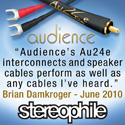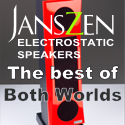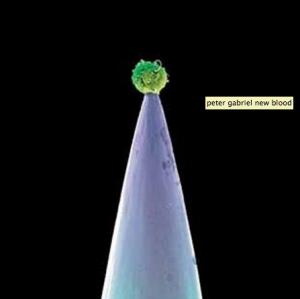|
|
You are reading the older HTML site
Positive Feedback ISSUE 63
dartzeel CTH-8550 Integrated Amplifier as reviewed by Danny Kaey
It seems that in today's world of hi-fi, we have an abundance of just about everything. From simple line stages to the last word in digital room correction devices; you can pick and choose from so much gear, so many manufacturers that your head will spin. Not to mention, attend a local trade show and seemingly everyone is barking the latest marketing hype from all angles. What's a man to do might you ask? Simple enough then; drop your shiny AMEX at the counter and walk out with the latest and greatest audio jewelry the world's most renowned manufacturers have to offer. Sometimes, however, that may be the wrong thing to do, as I have so blissfully discovered with darTZeel's CTH-8550 integrated amplifier. To be honest, around $20k retail (the actual price fluctuates based on the current value of the Swiss Franc and US Dollar) buys you a very nice Swiss made wrist watch, which may or may not get you more traction in your own domain. Or, you can drop it on the equally Swiss made DarTZeel integrated, the subject of this review. Now darTZeel, over the years, has made a name for themselves with mega-buck separate components that are universally accepted as reference quality by virtually every reviewer known to man. Clearly, Hervé Delétraz, darTZeel's not-your-cookie-cutter designer, has something up his sleeve. Having seen and heard these puppies at various trade shows courtesy of their US distributor, the affable Jonathan Tinn (who also distributes Playback Designs, Wave Kinetics, and Evolution Acoustics), I inquired if there was any interest in having the integrated reviewed for these fine pages. Ever the accommodating gentleman, Jonathan obliged and a few weeks later, the kind folks at FedEx delivered an unassumingly, nondescript mid-sized box at my doorstep. Surely, I thought to myself, this can't be all? Ah, perhaps the remote comes in a wooden crate then. Not so, as alas, my fears were unsubstantiated. The box indeed did contain a finely packaged (dare I say the clichéd word "Swiss like") integrated amplifier, a standard power cable, and of course a fine rendition of what is otherwise known as a user manual. Now, we all know the coveted term "audio jewelry", yet in this case, it seems to be more than just that: ladies and gentlemen, this thing is gorgeous! The build quality is absolutely first rate; hefty, weighty, and well proportioned, the 8550 exudes absolute confidence, no matter which way you look at it. No doubt, this thing means business. The beautiful, half inch thick gold anodized aluminum front plate, with its integrated LCD display, is surely a fine sight to be seen and the choice of a burgundy red colored chassis is equally well intended to offer up an alternative to the otherwise usually boring looking Hi-Fi fare of audio equipment (note: the unit is also available in an all black chassis, which in my most humble, biased professional opinion somewhat defeats the purpose…).
The front faceplate (as well as the all aluminum, Thor like remote control) features perhaps the finest quality input selector switches and the infamous "pleasure control" volume knob. Ahem, the former sounds rather pedestrian in verbiage. I have no idea where Hervé sourced the input selector switches from; I do have an idea of the costs involved and assume these to be very expensive, first class switches indeed. Anything less would be uncivilized I presume. The display shows volume levels in a bar style display, with a numeric volume readout relative to 0dbFs; the current input switch and if necessary, the local time. No widgets or apps though. Maybe he's saving something for the next version? Brilliant, as it is cleverly designed to be instantly recognizable as a true darTZeel component, this look is worth its weight in gold (yep, there's another one of those clichés). This heavenly integrated (CTH does stand for "Close To Heaven”) has two sets of unbalanced RCA outputs, one of which is part of the volume control so that the amp can be used as a preamp, a "darT" output (50 ohm BNC), two "Zeel" inputs (50 ohm BNC as well), four unbalanced RCA inputs, plus two more pairs marked MM and MC (MM is optional; an MC module, with user-adjustable gain, comes standard in the US), and a pair of balanced XLR inputs. The speaker terminals, as well as all other connectors may I say, are built to quite substantial standards. I make specific mention of this, as it immediately caught my eye. The unit also offers a standard IEC power plug and two USB inputs (more on these curious acts of integration shortly) complete the complement of this multitude of connectors. Needless to say, the term "integrated" has perhaps, in the history of such devices, never been more appropriately appropriated as with this, darTZeel's most integrated of creations. I recall, back in the 80's when I first got bitten by the Hi-Fi fever, my fascination with such devices; back then of course, no one (save Hervé of course) could have predicted that such a device would ever reach the qualitative elements as embodied by the 8550. Mind you, 8550 isn't yet another useless "who came up with that product name" model number; no, it is of course far more clever than that. Actually, 8550 stands for 85% of the sound for around 50% of the price. Naturally, this compares to darTZeel's other in house designs, most notably the stand alone pre-amp and power amplifier. Lastly, this is one heavy and substantial (the most substantial?) sucker: it weighs a hefty 65lbs. Now then, what with those twin USB inputs? Was Hervé that devilish in his engineering spree that he included a USB DAC? No, though not for the reasons you'd suspect, I am sure. The USB input is used to register and bring "online" your new prize, thusly ensuring the utmost in customer service and obviously to further stiffen off grey market imports, etc. Clever indeed, and dare I say, brilliant? But then, that's the mind of Hervé Delétraz (btw, he absolutely loves In-N-Out burgers). Finally, the front panel display will prominently show who's the dartz's daddy when prompted to do so. Try that with a Picasso. I'm just sayin'.
Armed with the 8550 and my reference pair of Zu Definition MK IV and Marten Django cans, er... speakers, I was curious to hear the sonic signature of this Swiss Wunderkind. Recalling the sound of darTZeel's separate components, I was immediately drawn to the dynamic, fast, and revealing characteristic of this integrated. Mind you, this amp's 300 or so ponies never felt truly necessary with either of my speakers, alas, it’s good to know that there is always instantaneous power on demand, whenever necessary. Shuffling between my usual set of electronic dynamic torture tracks such as Mino Cinellu, Yello, Kraftwerk and many others, I immediately felt the amazing control the 8550 forced upon the drivers: no sign of dynamic restraint, or mushy mellow overhang, this amp really showed these speakers who's their boss. Perceptually, I'd even venture to say that I felt the speakers go lower and deeper than with my other (tube) amps, and any sort of explosive electronic or live drum kit recording was rendered with authority and cunning speed. Equally amazing was the 8550s ability to shine focus and life into any piece being played. Martha Argerich's marvelous performance of Ravel's Piano Concerto in G (ca. mid 70's DG recording) is one of my favorite recordings of this all-time favorite piano concerto, and when played through the 8550, the performance took on a life-like character with clearly defined images suspended between the Marten and Zu speakers. Naturally, the 8550s ability to remain neutral, no matter what volume was required, instantly changed the sonic perspective depending on which speakers I was running. The Zu's, always the more upfront, macro dynamically engaging monsters, projected an image nothing short of spectacular; whereas the same music played through the Marten's always gave that speaker's more subtle, resolving powers a major nod. I think it’s fair to say that no matter what speaker is driven by the 8550, you will hear it the way it was designed to sound.
Another favorite torture CD (wait, what, they still make these?) to play is the ever so densely recorded Peter Gabriel album, New Blood. Here, Gabriel re-imagines his old hits in the same way that he did with his previous album Scratch My Back. Percussion and other instruments are replaced with orchestral arrangements, expertly projected to a densely populated, panoramic soundstage. The 8550s ability to clearly render each row of instruments virtually as if in their own space, was, simply put, incredible, especially considering the fact that Peter Gabriel's voice (albeit, crackling and showing his age) never seemed to take second stage or be diminished in any way. On the track “Don't Give Up,” Gabriel is joined by Norwegian singer and songwriter Ane Brun, who tries to give "new blood" to this forever in the halls of pop fame cemented tune. Her rapid fire vibratos may make her feel somewhat misplaced when first heard, though the 8550 does its absolute best to really reel you into her singing. In time, her rendition of this utter classic begins to shine with well, er, new blood. But wait, there's more. The Kirov Orchestra's Valery Gergiev's recording of Stravinsky's marvelously complex The Rite Of Spring is one of those rare modern multi-miked Philips recordings where everything just seems to fall into place. Shortly after the opening intro passage, incredibly well recorded drums kick in to give your system a major kick in the ass, that is, if it can in fact handle it. Here, without question, my favorite speakers to play are the Zu Definition MK IV's with their built in 12" earthshaking subs, each powered by a 500 pony Hypex module tuned to handle frequencies below 30hz. I'll say this: when played at the appropriate, live volume level, quite literally my house appears to shake, rattle, and roll. This complex passage is expertly resolved by the 8550 through the Zu's main, freshly minted full range drivers; there's air, there's tone, there's Stravinsky's insanity. In short, a powerful and complex orchestral passage was presented with authority and no matter the volume, always finely resolved instruments within the recording's soundstage constraints. The built in moving coil phono stage is also quite lovely. A recent addition to my Brinkmann vinyl rig (LaGrange, 12.1" Brinkmann arm, Röhnt tube power supply) has been the now no longer available Ortofon A90 super cartridge. Detailed, neutral (some say too neutral, but I digress), and full bodied, this vinyl combo is very good indeed. My reference phono stage, has received accolades the world over, so naturally I was curious as to how the "integrated" darTZeel approach would fair in comparison. Playing Kate Bush's latest album, 50 Words For Snow, was thusly a stupendously good experience. Mastered by none other than James Guthrie, the sound is densely populated, with exceptional clarity, spatial cues, and that oh so famous voice that is Kate Bush. I need not have fretted, the 8550s built in MC stage was absolutely true to the recording, and offered up each of the cuts with clarity, appropriate image size, detail, and dynamics galore. No small feat for a phono stage that has to essentially battle it out for space, efficiency, and integration with many other components inside the 8550s chassis. Seemingly then, this darTZeel is quite the Wunderkind. If I asked for more, as in, more pleasure, the 8550 delivered in spades. Indeed, so impressed have I become with this integrated, that it has de facto become a mainstay component in my system. Every now and then a component comes along that seems to just capture the essence of music and your own idea of what that is supposed to sound like. Stupendously great engineering coupled with absolutely first rate Swiss build quality, this integrated amplifier is perhaps the closest you will ever get having it all. Pricey? Yes, without question. Without equal? I'd wager to affirm that too. Sure, there's many other integrated amps out there, alas, few of them would approach the 8550 in terms of sound, fewer still as a whole package. Indeed, at the top, the air kinda gets thin. Well done Hervé, and kudos to all the accolades your designs have received already in the world press. Most highly recommended, A+++! Danny Kaey
darTZeel US Distribution
Blue Light Audio
|









